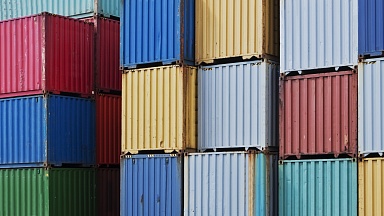With some 30m teu carried each year, the intra-Asia tradelane is the largest in the world, comprising around 100 port pairs.
Costs have traditionally been kept in check, there’s been less carrier consolidation than on deepsea trades, with major regional players competing for cargo.
However, these previously low-cost shipping routes are now seeing large freight rate increases and carrier surcharges.
«Intra-Asia rates have increased due to the lack of equipment and space caused by blank sailings,» said Peter Sundara, VP global ocean product at LF Logistics.
«For example, earlier this year, niche intra-Asia carriers were offering 20ft containers from Shanghai to Ho Chi Minh City for only $1, plus local charges. This was driven by the US-China trade war and an uptick in demand for exports out of Vietnam, so carriers were offering very low rates to encourage empty repositioning.
«However, for the same port pair now, rates are $970-$1,300, valid until 30 November, on the spot market.»
Mr Sundara said he did not expect rates to fall as long as equipment and space shortages persist, with the peak season lasting until just before the Chinese New Year holiday in early February.
Last week, Hapag-Lloyd described the global container shortage as a «black swan» event, noting the «strongest increase in 40ft demand, following one of the strongest decreases in demand ever» within six months.
The carrier suspended bookings of agricultural products from North America so it could prioritise repositioning equipment to the more lucrative Asian export market, and ONE executive Jeremy Nixon warned of increasingly costly empty container repositioning last year.
Intra-Asia is also feeling the brunt of the huge demand in the US for Asian exports, and the bumper profits available to carriers on transpacific trades.
«Carriers are implementing yield management and prioritising containers for high-yield cargo, primarily on the transpacific eastbound, but also Asian exports to Australia, Africa and Latin America,» explained Mr Sundara.
«Whereas, intra-Asia lanes have minuscule margins, which is creating severe shortages of 40ft containers.»
Indeed, he said, customers were now being encouraged to substitute 20ft boxes for 40ft boxes, meaning both types would soon be in very short supply.
«Freight rates keep rising,» added Mr Sundara. «GRIs have been announced by multiple carriers on intra-Asia tradelanes for 15 November, ranging from $200 to $500, and some carriers are also imposing a peak season surcharge of $300 per teu from the 23rd.»
Intra-Asia cargo volumes are largely driven by China-Asean trade, Mr Sundara noted, «especially after China’s Covid lockdown was lifted».
And he believes the China-US trade war continues to have an impact, given the increasing prevalence of the ‘China plus one’ sourcing strategy and desire for more resilient supply chains.
«Vietnam, Thailand and Indonesia have all benefited from this alternative sourcing model,» Mr Sundara said. «And e-commerce is another factor in South-east Asia as consumers were buying more online as they have additional disposable income for physical goods, rather than services.»
Furthermore, Mr Sundara said, the ongoing capacity crunch in air cargo — limited belly space and freighter availability — meant more inventory needed to be stocked in warehouses to meet the higher e-commerce demand.



